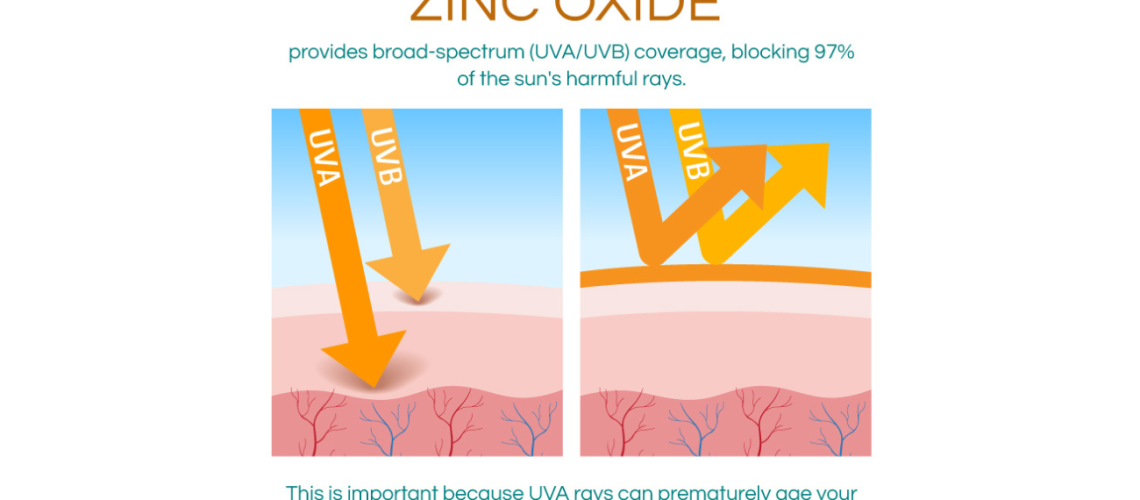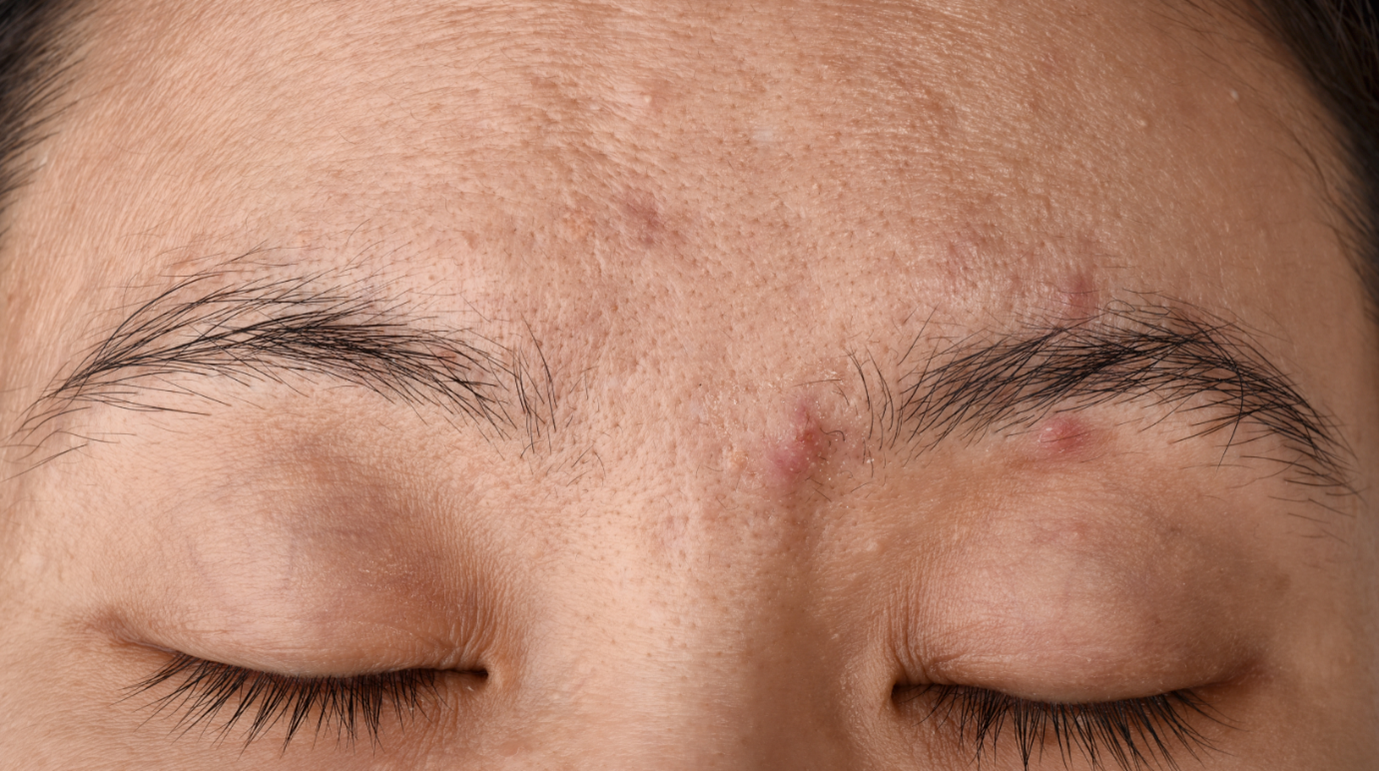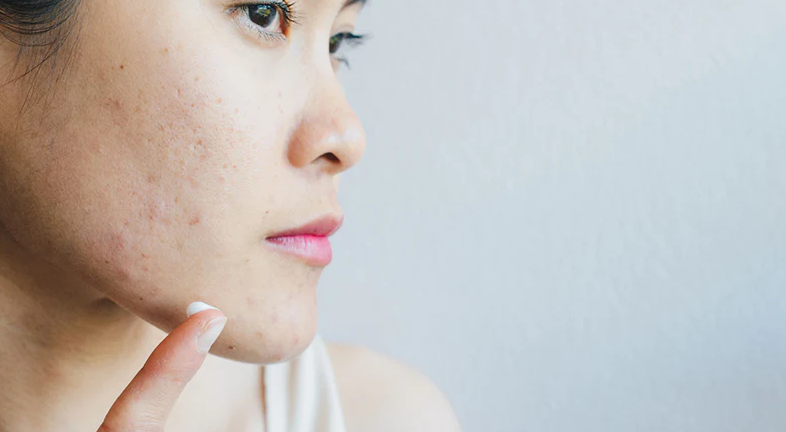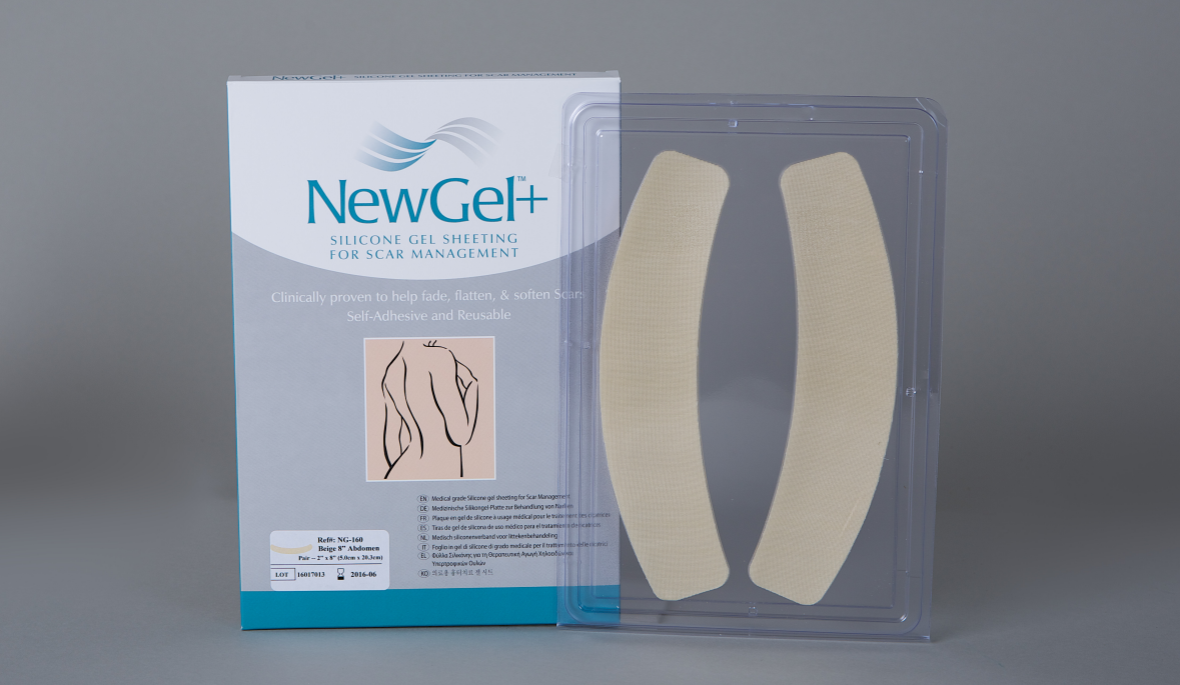Zinc oxide is a natural ingredient derived from the mineral zincite. Upon melting zincite, zinc vapor reacts with oxygen to produce zinc oxide, a white powder that is insoluble in water. Zinc oxide is widely used as an additive in manufacturing and other industrial applications. However, when carefully formulated with other ingredients for healthy skin, zinc oxide can soothe skin and protect it from free radicals and irritants.
ZINC OXIDE SUNSCREEN
In the skincare industry, zinc oxide is best known for its use as an ingredient in physical sunscreens. Physical sunscreens work by using physical UV filters, like zinc oxide, to block or deflect the sun’s UV rays. Chemical sunscreens work by first absorbing UV light, then transforming that light energy into some other form of energy, such as heat. Since zinc oxide is not absorbed by the skin, it is typically better tolerated by most skin types when compared to the ingredients found in chemical sunscreens. Therefore, physical sunscreens are considered one of the safest sunscreens available.
Sunscreens with zinc oxide provide broad-spectrum (UVA/UVB) coverage, blocking 97% of the sun’s harmful rays. This is important because UVA rays can prematurely age your skin, whereas UVB rays can burn your skin. Both types of radiation can lead to a condition called post-inflammatory hyperpigmentation (PIH).
PIH is caused by the combination of inflammation in the healing tissue and sun exposure, leading to an overproduction of the skin pigment melanin. The result? Dark brown spots on the scar and surrounding skin that could be permanent. Thus, one of the benefits of zinc oxide for scars is preventing the development of PIH.
HOW ZINC OXIDE BENEFITS SCARS
The use of zinc oxide for skin conditions dates back to 1025 AD when Avicenna mentions zinc oxide in The Canon of Medicine (1025 AD), referring to it as the preferred treatment for a variety of skin conditions, including skin cancer. While zinc oxide is no longer used for treating skin cancer, it is known for its anti-inflammatory, antiseptic, and soothing properties. It is gentle and non-irritating to sensitive scar tissue, allowing scars to mature without added damage.
According to a publication in the Annals of Burns and Fire Disasters, a 2006 study found zinc to be beneficial when applied after a burn and helped skin to heal faster. Additionally, zinc oxide not only improves wound healing but also can help to reduce the appearance of abnormal scars, such as keloids. Keloids form due to excess collagen production during the wound healing process, which results in a raised, discolored scar.
An article published in the journal Dermatology Research and Practice reports that the beneficial effect of topical zinc in the treatment of keloids has been attributed to two characteristics. It has the ability to inhibit lysyl oxidase and stimulate collagenase which leads to decreased production and increased degradation of collagen.
Trust NewGel+ to soften, flatten, and fade your scar
1300 294 649 // sales@ssau.au // Supplying medical products to the healthcare market





